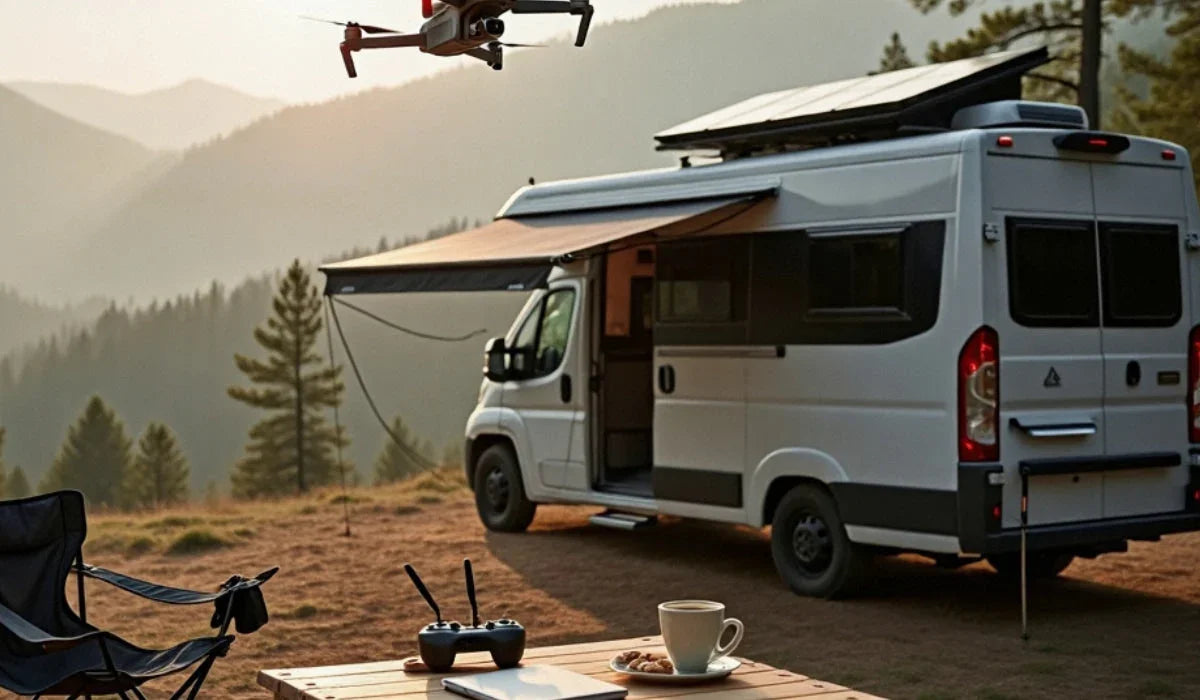RV travelers are increasingly bringing electric vehicles on the road—like e-bikes, scooters, or compact EVs. Charging these small EVs off-grid can be a challenge without stable power. An inverter generator provides a portable and fuel-efficient solution for these needs. Although it’s not designed for fast charging, it keeps your devices running and your journey uninterrupted when far from the grid.
Why Use a Generator in the RV Lifestyle
Remote RV camping often lacks access to public EV charging stations. Campgrounds may not provide hookups, and a mobile EV gives travelers more flexibility after parking. Inverter generators become a reliable backup. It offers 120V Level 1 charging, fits compact RV storage, and handles basic power needs for personal electric vehicles.
How Level 1 EV Charging Works
Level 1 chargers come standard with most small EVs and e-bikes. These plug directly into 120V household outlets and draw a modest amount of current. When paired with a 2000W or larger generator, these chargers deliver steady electricity for safe operation. Typically, users can gain 3–5 miles of EV range per hour, or 20–30 miles overnight. Most e-scooters and bikes recharge fully in less than four hours.
Essential Charging Equipment for RV Setups
Reliable off-grid charging requires a few key items. A 2000W+ inverter generator provides the clean sine wave power necessary for sensitive electronics. Most EVs include a Level 1 EVSE charger, which plugs into household-style outlets. A 12 AWG weather-resistant extension cord adds flexibility and safety. A TT-30P to 5-15R adapter bridges your RV outlet and EVSE plug. A grounding kit is optional but helps prevent charging errors on certain systems.
Charging in Real-World Camping Conditions
Imagine you’re boondocking in a quiet forest, charging an electric scooter while running a small refrigerator. A 4500W generator makes this possible, operating quietly at night without disturbing nearby campers. In one overnight session, you can add enough EV range for errands, exploring local towns, or driving to your next campground. The same unit can simultaneously power your lights, fans, or other RV essentials.
Ideal Generator Use Cases in RV Life
RV users rely on inverter generators in many outdoor situations. During boondocking, they provide essential off-grid power. When you need a fast e-bike top-off, these generators offer quiet, efficient support. They handle appliances like coffee makers, microwaves, and small air conditioners. During storms or blackouts, they act as dependable emergency power sources. For nature-based travel through state parks or remote areas, they are compact and dependable power solutions.
What to Look for in an RV Inverter Generator
Choosing the right generator is critical for RV living. Look for a model that delivers at least 3000–4500W, enough for air conditioning and charging. It should have RV-ready TT-30R outlets and produce a pure sine wave with less than 3% THD. Consider dual or tri-fuel models for flexibility when gas is limited. Features like electric start, CO sensor, and 60–65 dB quiet operation make camping more convenient and peaceful.
Watch how an inverter generator powers RV appliances like lights, fridge, and more—ideal for off-grid EV life.
Environmental and Safety Considerations
Generators produce carbon monoxide and must always run outside with proper ventilation.
Some inverter generator models include CO sensors, low-oil shutoff, and surge protection for safety.
For CO-related safety and indoor air guidelines, visit the
EPA’s official safety guide on power outages and air quality
and
carbon monoxide’s impact on indoor air.
Fuel Efficiency and Emissions
Efficiency is a major advantage of inverter technology. A 2000W inverter generator consumes only 0.1–0.2 gallons of fuel per hour at 25% load. Traditional generators often require 0.3–0.5 gallons for the same output. This fuel savings reduces carbon emissions and cuts fuel costs during long-term RV use. You can calculate environmental impact with the EPA Greenhouse Gas Calculator, which compares CO₂ output from different fuel use patterns.
FAQ: Inverter Generators and EV Charging
Q1: Can I run an RV air conditioner with an inverter generator?
Yes. You’ll need at least 3000W of continuous power. Larger AC units may require over 3500W to start.
Q2: Can I charge my scooter or e-bike with one?
Absolutely. Most scooters require under 1000W. A 2000W inverter generator easily supports them.
Q3: Do I need to ground the generator during use?
Sometimes. Check your generator and RV manual. Bonding plugs or ground rods may be required.
Q4: Is overnight charging safe?
Yes, if the generator runs outside on level ground with enough ventilation and fuel. Always monitor CO levels.
Q5: How long will one tank of gas last?
Most 3000–4000W generators operate for 8–12 hours at partial load using 1–2 gallons of gasoline.
Conclusion: Off-Grid Power for RV Adventures
The RV lifestyle offers independence—but only if your devices stay powered. A quality inverter generator bridges the gap between modern electronics and the great outdoors. Whether you’re exploring backcountry trails or parking beside a beach, your e-bike, lights, and appliances stay powered. Make the right generator choice now, and never be left unplugged again.



